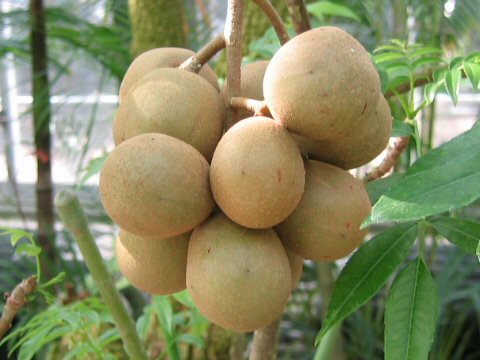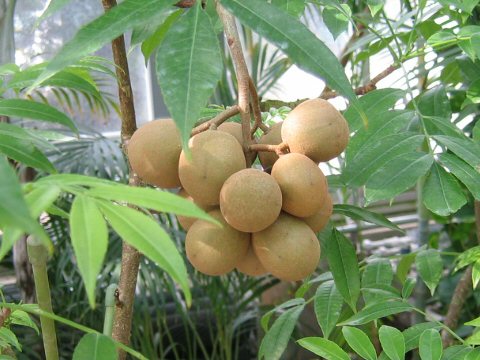 |




|

|
インドから熱帯アジアに分布しています。「たまごのき(Spondias cytherea)」に似ていて、高さは18メートルほどになります。葉は奇数羽状複葉で、暗緑色です。円錐花序をだして、緑白色の花を咲かせます。果実は卵形で、褐色に熟します。酸味が強く、生食や料理に利用されたりします。ただ和名にある「アムラ」については、説明が見あたりません。推測するに、インドの「アーユルヴェーダ」にある「アムラ(酸味)」の意味か、サンスクリット語で「マンゴー」を意味する「アムラ」あたりでしょうか。ちなみにタイの首都バンコクの名前は、この木「マコーク(kok)」の茂る「水辺の集落(bang)」に由来するそうです。
|

|
ウルシ科スポンディアス属の常緑高木で、学名は Spondias pinnata。英名は Common hog plum、Indian mombin、Wild mango。
|

|
The Common hog plum (Spondias pinnata) belongs to Anacardiaceae (the Sumac family). It is a tall evergreen tree that is distributed from India to tropical Asia. It is similar to the "Golden apple" (Spondias cytherea) and grows up to 18 m tall. It has odd pinnate compound leaves that are dark green. It produces panicles with greenish-white flowers. The fruit is ovate-shaped and ripens to a brown color. The fruit has a strong sour taste and is eaten raw or used in cooking. However, there is no explanation for "amura" in the Japanese name. I guess it could be the meaning of "amla" (sourness) in Indian Ayurveda, or "amra" meaning "mango" in Sanskrit. Incidentally, the name of Bangkok, the capital of Thailand, comes from the "bang" (waterside village) where this tree "kok" (makok) grows.
|

|
京都市左京区「京都府立植物園」にて、2004年02月07日撮影。
|



